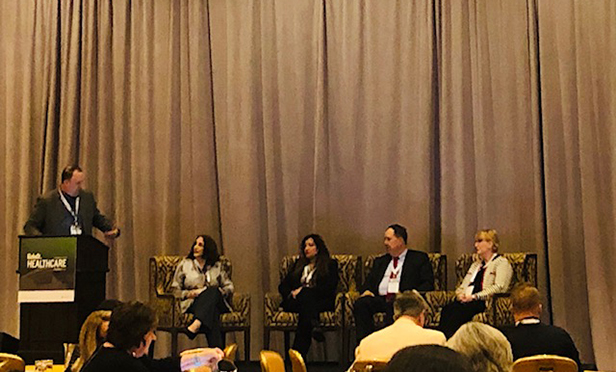 SCOTTSDALE, AZ—Healthcare facilities design has transformed over the years. Expert panelists at the recent GlobeSt. Healthcare Real Estate Conference joined together to address the pertinent issues in the design and construction process of hospitals, outpatient facilities, urgent care clinics, and MOBs. They discussed the challenges and solutions involved in the design and construction stages while utilizing new delivery methods to create more efficient facilities.
SCOTTSDALE, AZ—Healthcare facilities design has transformed over the years. Expert panelists at the recent GlobeSt. Healthcare Real Estate Conference joined together to address the pertinent issues in the design and construction process of hospitals, outpatient facilities, urgent care clinics, and MOBs. They discussed the challenges and solutions involved in the design and construction stages while utilizing new delivery methods to create more efficient facilities.
Panelist Daina Pitzenberger, SVP at JLL, says the future will be about value-based care that will incorporate more than just wellness and education. "It will still be connected to really monitoring and managing illness. The whole deal is trying to decrease cost of care."
One of the trends she expects to see more of is the five-story medical office building that is similar to the airline admission process with one reception desk. "It is unique because it is a centralized receptionist and they give you what looks like a boarding pass and families join since you have to also educate all the members of the family. The exam rooms are large. It is unique."
She explains that in that facility model, all disciplines are invited to the patient. "It is kind of like universal design. It is all about flexibilities. Visits take two hours and they see six physicians."
It is all about keeping people aware to keep them away from the doctor, explains panelist Peter Becronis, Founding Partner, Inception Property Group. "It is key to keep a patient healthy without getting them in but still interact with them, but when they have an issue and need help, getting them treated with the right specialist and healthcare they need is essential."
When moderator David Wilson, VP of Real Estate Development at Ryan Cos. US Inc. asked about design elements that are being implemented to take care of the aging population, panelist Kristin Ellingsen, healthcare specialist at the Office Furniture Group, said dealing with infection control is a real focus point and noted that there are a lot of new options out there. "We are moving away from wood due to germs and damage and incorporating more metal and more arm cap options."
She also explained that the coated fabrics and upholstery that is being used is changing as well. "We are looking at fabrics that don't get deteriorated by cleaning."
When asking about new trends at the hospital, Ellingsen said they are being much more patient centered. "Sometimes some care providers or hospitalists will spend too much on the fancy lobby and not enough on the patient room and staff areas. Also, keeping those staff and making a space nice for them is important. Another interesting thing is for hotel like features where you can stay with a family member getting treatment…Whether it is a sleep sofa where it has a table that pops up so you can work with a family member or something similar. We are seeing more options and more chairs being brought in."
So how will tech influence design trends? Monica Miller at Valleywise Health said that telemedicine is bringing the ability to have medicine in rural areas. One thing to consider in terms of design, though, are the acoustics, she said. "Protecting patients' privacy, how you set that up etc. to facilitate telemedicine services is key."
© Touchpoint Markets, All Rights Reserved. Request academic re-use from www.copyright.com. All other uses, submit a request to [email protected]. For more inforrmation visit Asset & Logo Licensing.







